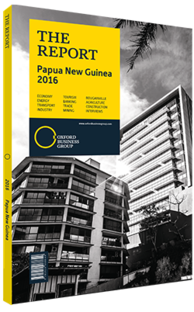A new acquisition should increase competition in Papua New Guinea's banking sector
Historically, Papua New Guinea’s banking sector has been one of the most profitable in the world in terms of return on equity and interest rate spreads. In 2015 the gap between borrowing and lending rates was reported at 8.3%, down slightly from 9% in 2014, but higher than in most of its neighbours – Indonesia was at 4.3%, Malaysia at 1.5%, the Philippines at 4% and Thailand at 5.1%. Most island economies also had lower spreads, with Fiji at 3.3% and Vanuatu at 2.2%, although Solomon Islands had a spread of 10.2%, according to the World Bank.
While the high profitability is in part the result of good lending and risk management practices, the lack of intense competition is also a possibility, especially as the top three banks control more than 96% of the market and the top bank has more than half the market. In recent years, the central bank – the Bank of PNG – has been pushing for an increase in competition in the sector in the hope that this would reduce costs and lead to an expansion of business in areas that have traditionally been poorly served by the banks. The structure of the sector also has larger implications for the economy and for foreign investment. Ratings agencies have commented on the issue, saying that the lack of competition has the potential to impact the country’s credit rating.
Fourth Bank
A fourth player has been suggested as a way to achieve a more vibrant market, and foreign institutions have in the past looked into the possibility of an investment in the country. While PNG had at least four banks for over 20 years, Maybank, the PNG subsidiary of Malaysia’s largest bank, was always seen as having a limited impact. It had a low market share at less than 5%, only two branches and a focus on Malaysian customers. PNG has not gained an additional bank, but in 2015 Maybank sold its interests to the Kina Group, a local financial institution. The value of the transaction, which also involved assets other than the bank, totalled PGK352.8m ($120.4m). The Kina Group made the acquisition in part to lower its cost of funding, as retail deposits are cheaper to source than funds in the wholesale market. In some ways, the transaction will help make the market more competitive. According to comments in the local press, Kina Group, which is also involved stockbroking, fund management, trustee services and fund administration, plans to expand the market share of its new subsidiary and push into underserved areas.
Good For All
While more competition could mean a tightening of margins, the sector welcomed the transaction. Banking executives said that they expect the new owners to do more with the banking licence than its predecessors and that the move would be good for the market as a whole. “I think it makes the market more competitive,” Mark Baker, managing director PNG at ANZ Banking Group, told OBG. “They want to be here and they want to expand. Kina have made it clear they want to expand. I think it is good; they are going to be in that medium-sized space, and that is a difficult space to bank.”
The transaction involved more than just a purchase. In order to finance the acquisition of the bank, Kina Securities listed in Port Moresby and Sydney, the first financial services firm in the country to undertake such a dual listing. The company sold 97m shares at PGK2.08 ($0.71) a share, leaving it with a market capitalisation of PGK341m ($116.4m) in the transaction. The funds were raised for the purchase of Maybank, to buy stock from leading shareholders and to increase working capital, and the issue was said to be well received. Australian investors were attracted to the group because it should give them exposure to the local economy across a broad range of products.
Some doubts remain, however, as to whether the bank has enough capital to undertake an effective expansion initiative in a market with such entrenched competitors; especially in one where branch openings can be expensive and financial literacy is low.
You have reached the limit of premium articles you can view for free.
Choose from the options below to purchase print or digital editions of our Reports. You can also purchase a website subscription giving you unlimited access to all of our Reports online for 12 months.
If you have already purchased this Report or have a website subscription, please login to continue.


